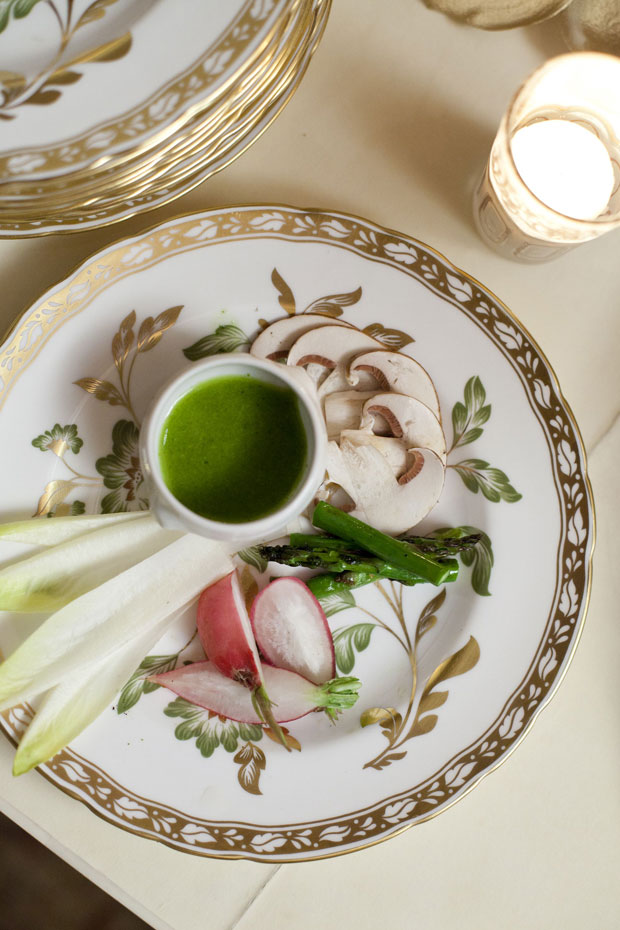March 1, 2012


I had a blast this morning during my appearance on Table Talk. We talked about the blog and I shared my passion for putting together a gorgeous veggie platter. Below are the tips we discussed and links to some of my tasty dip recipes.
Tips for Arranging a Veggie Platter
I love to serve a veggie platter/ crudités for many reasons. Whether I’m hosting a formal sit down dinner party or serving up an easy meal for my own family, fresh veggies from the garden are always on the menu. Garden fresh produce is healthy, beautiful and tastes great. A pre-dinner veggie snack plate is an easy way to get my kids crunching on carrots and radishes rather than crackers or chips.

When serving a platter of fresh veggies you want to keep it simple and seek out the best tasting produce you can find. If you don’t grow the vegetables in your own garden, then head to your local farmers market or produce stand and shop with your eyes seeking out the most beautiful colors for your plate.
If you seek out in-season ingredients you’ll always be rewarded with the best taste. A great example of this is celery. Pre-garden, I considered celery bland, but after growing it in my garden and finding organically grown celery at the farmers market I have discovered that it has a robust flavor, sweet with a bit of bitterness that is wonderful.

Here I used cooked beats, snap peas and red carrots.
Here are some vegetables that you will find in season now that are ideal for a raw platter: asparagus, baby turnips, radishes, sugar snap peas, baby carrots, celery, romanesco, broccoli, colorful cauliflower and fennel. Also, feel free to add cooked vegetables to your platter, such as beets, baby potatoes or kale chips—I throw those in a small bowl that I place on the platter.
Prepare your ingredients:
Prep your veggies by cleaning them well with cool water and I use a little assistance with a scrub brush, too. After cleaning, dry well and slice with a sharp knife into bite-sized pieces. I like to keep about two inches of stem intact on my carrots, turnips and radishes for easy dipping— think of it as a little handle. If you’re dealing with larger produce, slice it in half but still keep that stem on for dipping.

For a more formal look, plate it for individual portions with a small ramekin of dip. Photo by Erin Feinblatt
Making your platter pretty:
Once the veggies are prepped, my favorite method is to mound each vegetable up on a platter all together in blocks of colors like a color wheel. For example, to make a pretty mound of carrots I hold a bunch of carrots in my hand, all going in the same direction, then literally drop them onto the dish, allowing them to land naturally — if they get too scattered squish them together to create a heap on the plate. I’ll repeat the same method for the other vegetables in the wheel. This creates symmetry, but also gives the platter a little personality and an organic feel. You don’t want them to be too perfect, you want it to feel like a fresh from-the-garden bounty.
Here are a couple of my tried and true favorite veggie dips: